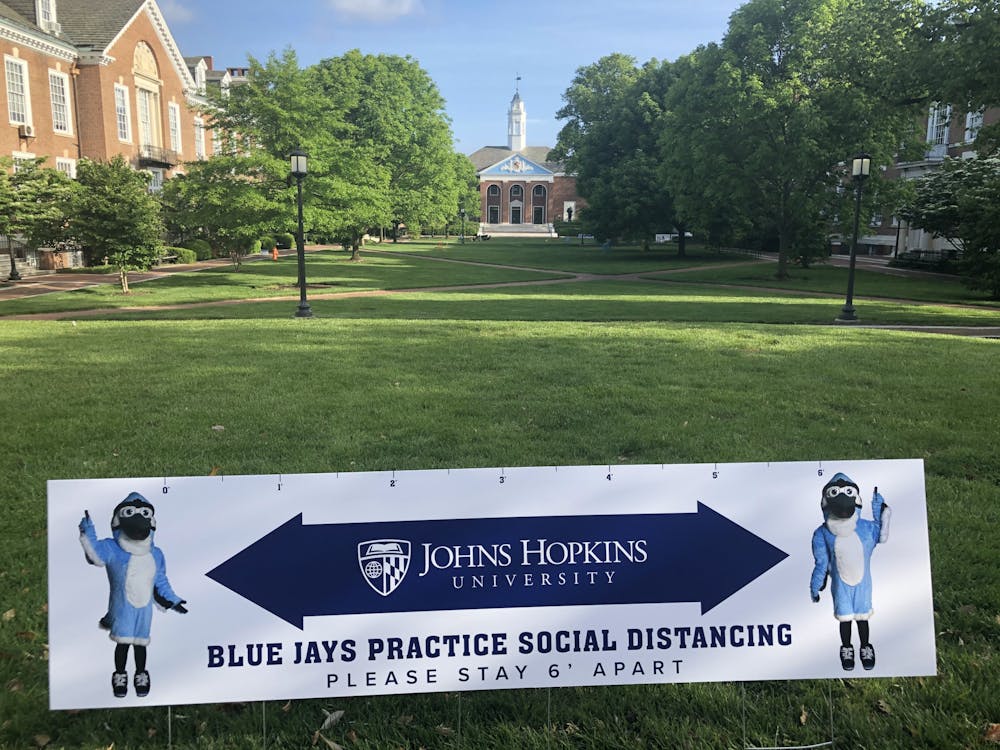Prodensity — an app originally developed to facilitate the record tracking of in-lab researchers during Phase One of the University’s reopening plan — has now improved to allow Hopkins affiliates in Baltimore to access resources and report their health status, as well as seek help if they have symptoms.
The mobile application provides real-time awareness of area density and personnel occupancy on campus. Individuals who return to work can download the app to monitor adherence to density policies and distancing practices.
Though, as of now, most faculty and students work remotely, those who work and research in campus buildings can use the app’s QR code scanner to check in and out of their assigned buildings as well as monitor how many other people are in their proximity. The app also helps administrative staff to adhere to the maximum occupancy of a building by disallowing new entrances, and if necessary, notifying occupants through the app.
In addition to Prodensity, the University recently launched a dashboard that records positive coronavirus (COVID-19) test results among Hopkins affiliates in Baltimore.
While this transparency is useful, the data published does not help individual students monitor whether they have been exposed or determine if they have symptoms. Fortunately, Prodensity could fill this role, if modified.
As Prodensity was originally designed to monitor the occupancy of a workplace, reporting through the app is currently only required of those venturing “on campus.” This leaves students living in the Charles Village area with no reliable resource for contact tracing. Still, even if all students were required to use Prodensity, the app has many issues.
Two questions designed to determine whether students were exposed to or are exhibiting symptoms of COVID-19 seem inadequate. “Exposure” is a difficult concept to grasp: Have I been exposed if I walked past a person coughing at the bus stop who later tests positive? Have I been exposed if I went to a few-masks house party last night, but no one in attendance has tested positive yet? These two questions should raise a red flag to the at-risk status of the individual. However, neither situation would be captured by the question for risk assessment: “Do you live with someone who was diagnosed with COVID-19 (coronavirus) within the last 14 days?”
Without a decisive test, a health check via questionnaire already carries a great amount of uncertainty. Instead of assuming optimistically that students will honestly answer two questions and therefore successfully manage risk, the University should employ a tool that can better track COVID-19 among students.
Prodensity could fulfill this role by soliciting more relevant information, such as body temperature, local address and whether the user has traveled to crowded, indoor places. Such information, while supplementary on a good day, may prove to be advantageous to identify at-risk individuals and prevent an outbreak starting within the Hopkins community.
Another flaw of the app is the lack of temporal continuity in reporting. After submitting the health check, the immediate green badge grants the student access. But this may give the impression that one only needs to report before accessing a campus building. Weekends and other breaks, in which people are more likely to gather in groups and travel, can therefore go unreported.
Going off that point, the greatest flaw I see in Prodensity’s current reporting system is the retrospective nature. Remembering if I coughed three days ago or if I have come into close contact with a COVID-19-positive patient two weeks ago can be practically impossible, with already a million things on my mind regarding school, a part-time job and financial aid.
What I reported in the health check consequently has a high probability of inaccuracy (especially when reporting is as easy as clicking “no” twice without thinking). It would be a lot more efficient if, on top of added questions, the questionnaire focused on “today,” asking if the student had gone to the grocery store or had a fever. The green badge would then appear after a daily report streak covering the well-established 14-day incubation period.
Hopkins needs a more robust, comprehensive tool to track COVID-19 cases among its community members. It surely made a good start with the recently launched dashboard. However, this community-wide public health approach does not negate the necessity to heighten the sense of personal responsibility, which can be just as helpful in containing the virus. Prodensity could be a valuable instrument if the daily health report feature was improved and mandated for all students, staff and faculty in Baltimore rather than just those entering University facilities.
Certainly, it may feel too stringent and onerous to log something daily for the foreseeable future. But, the repetitive nature of this task could contribute to a heightened sense of responsibility to each other and an opportunity to remind oneself: Before we can resume in-person activities, everyone must make protecting themselves and others a top priority.
Shizheng “JJ” Tie is a senior studying Environmental Engineering from Luoyang, China.





